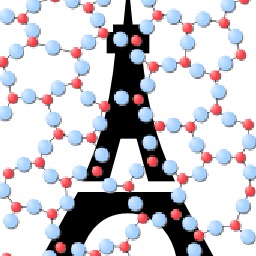Bond Switching in Densified Oxide Glass Enables Record-High Fracture Toughness
Humans primarily interact with information technology through glass touch screens, and the world would indeed be unrecognizable without glass. However, the low toughness of oxide glasses continues to be their Achilles heel, limiting both future applications and the possibility to make thinner, more environmentally friendly glasses. Here, we show that with proper control of plasticity mechanisms, record-high values of fracture toughness for transparent bulk oxide glasses can be achieved. Through proper combination of gas-mediated permanent densification and rational composition design, we increase the glasses’ propensity for plastic deformation. Specifically, we demonstrate a fracture toughness of an aluminoborate glass (1.4 MPa m0.5) that is twice as high as that of commercial glasses for mobile devices. Atomistic simulations reveal that the densification of the adaptive aluminoborate network increases coordination number changes and bond swapping, ultimately enhancing plasticity and toughness upon fracture. Our findings thus provide general insights into the intrinsic toughening mechanisms of oxide glasses.
